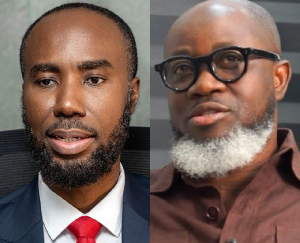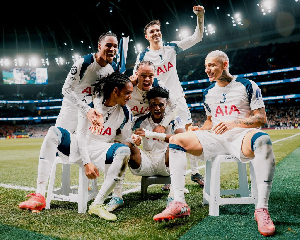Following inaccurate reporting and misinformation circulating in social media networks, IMANI takes this opportunity to provide a clear and concise summary of key developments in, as well as the present status of, its campaign against the actions of various state agencies in the KelniGVG contract matter.
1. IMANI has published very detailed updates in the recent past. It would appear however that due to their length, these reports have not been widely read. It has been shocking reading the erroneous impressions out there. We intend to keep this report brief to increase the chances of more people reading it in full.
2. In May 2018, IMANI commenced a campaign aimed at compelling the Ministry of Communications (MOC), the National Communications Authority (NCA), and the Ghana Revenue Authority (GRA) to review its engagement of KelniGVG in a $178 million project on the grounds that the entire approach to revenue assurance in the telecom sector was wrong-headed, and that the contract had been awarded in shady circumstances.
3. IMANI showed that the whole project could be undertaken for less than 1% of the amount being quoted and that the intended approach is not substantively different from what the country has been doing for many years now; and yet communications taxes (CST) had dropped from $58 million in 2016 to $54 million in 2017 despite Ghana spending about $32 million a year on various measures designed to “protect revenue”.
4. Of course, Government of Ghana (GoG) is not under any compulsion to accept IMANI’s policy suggestions, however right IMANI may be, and however wrong GoG may be.
5. What GoG is under compulsion to do is to obey the law. If policy advocacy was not going to have any effect on GoG, then it was incumbent on IMANI to focus on law-breaking behaviour and then proceed to the right judicial forum to push its case.
6. On May 28th 2018, IMANI’s executives took part in deliberations of the Ghana Anti-Corruption Coalition (GACC) CSO platform, which resulted in a letter to the Ministry of Communications and other relevant agencies to furnish the broad-based coalition with all the information they have on the contract. The Ministry simply replied on June 11th 2018 that it could not immediately locate the documents.
7. Consequently, Sara Asafo-Adjaye and Maximus Ametorgoh sued the MOC, the NCA, the GRA, the Attorney General (AG), the Chamber of Telecoms, and the four main telcos on 11th June 2018 citing the risk that the “real-time monitoring” platform design would allow KelniGVG to snoop on their communications.
8. A similar suit was filed at the Supreme Court on 14th June 2018 by IMANI and Citizen Ghana against the AG and the MOC.
9. Finally, a third suit was filed by three affiliates of IMANI on the 18th of June 2018 at the High Court against the MOC, AG and KelniGVG citing breach of the Public Procurement Act (Act 663) and the Public Financial Management Act (Act 921). Needless to say, these actions were coordinated.
10. On July 3rd 2018, the High Court ordered the release, by July 9th 2018, of all documents relevant to the matter in the possession of the MOC.
11. The Ministry refused to comply by this deadline. The same court, however, dismissed Sara and Maximus’ application for an injunction on July 10th 2018. Following this development, the only obstacle in the way of the project rollout became a July 5th 2018 injunction secured from the Court of Appeal by Subah Infosolutions. The injunction was in connection with Subah’s lawsuit of 27thDecember 2017 against the NCA and the GRA for the abrogation without proper notice of its contract with the two government agencies.
12. The two-month legal vacation was now a few weeks away. IMANI had assumed that several Ghanaian engineers would be willing to testify in court about the offending nature of the KelniGVG technical approach since many of them had in private shared serious concerns about both the commercial and technical specifications. When the time came, none of the engineers IMANI identified and approached were willing to do so in open court.
13. Only engineers with considerable experience designing and implementing systems in the three main areas of concern – signal processing, billing, and packet analysis – could sufficiently impress the court with their credentials to sway it. We had on our team many individuals with solid working experience in all aspects of the telecom industry, but in a court case of this magnitude that was not deemed enough. We needed persons outside our immediate circle with such direct involvement in telecom network design that no Judge could discount their arguments.
14. The engineers in Ghana fitting this bill virtually all work for telecom networks or for their contractors. Their reticence was thus informed by a fear of offending the MOC, which could lead to loss of commercial opportunities, for their firms or themselves, in the present or in the future.
15. Throughout the legal vacation period we continued to work on this problem. Eventually, the decision was taken to fly in three foreign experts. These experts were expected to be on retainer throughout the testimony period, which could be seriously prolonged by an extended cross-examination. When the budget was drawn up, the costs came to nearly 300,000 GHS (including fees, flights, accommodation and contingencies).
16. IMANI set out to raise the funds to support the firm of solicitors working on all the cases, Lexis Praxis. It approached donors like STAR-Ghana. It became obvious very quickly that all major donors had due process requirements that would take months to navigate. A fundraising appeal on social media and within informal networks was then launched.
17. Eventually, it became clear that the resources to mount an effective legal battle, complete with star experts was beyond IMANI’s reach. Citizens apparently like to support good governance on the side-lines, but not with their money.
18. In early October 2018, we were told of an imminent settlement of the lawsuit between Subah and the GRA that would have the effect of lifting the injunction.
19. Sensing an opening, KelniGVG’s lawyers in the court case approached Lexis Praxis and offered to settle the case out of court. They were willing to allow independent monitoring of an architectural redesign to address the privacy concerns but only if all proceedings in the courts were summarily ended. It is important to note that as far as the privacy issue was concerned, this is exactly what any court would have ordered: a technical audit, and then a redesign of any part of the design was likely to breach privacy rights. More than this however, Kelni was open to an oversight committee continuing to monitor compliance throughout the duration of the contract.
20. Considering the resource limitations, it was obvious that the best course of action was to settle one-half of the issue out of court and then look for a less expensive alternative forum to address the other half. Thus, on 12th October 2018, the three cases were withdrawn with the leave of the plaintiffs. There was no court-adopted settlement. This strategic manoeuvre left IMANI free to explore any other available means to continue to press the value for money aspect of its campaign whilst giving civil society significant input into the technical rollout insofar as it risked privacy of citizens. Whilst this was only a partial victory, it was the best we could hope for at that time.
21. Sadly, the public financial management and procurement issues remain unresolved because the relevant government bodies, who alone can remedy that abuse, refuse to engage.
22. IMANI continues to dialogue with other civil society groups about the best way forward in the value for money dispute. If the Government cannot be brought to the table, the options would be two-fold: explore alliances to find the necessary resources to continue pressing this matter in Court or seek redress in an alternative forum, most likely CHRAJ.
23. The main statutory grounds of contention are to be found in the provisions in section 25(7) of the PFM Act (Act 921), which bars the Ministry of Finance from approving multi-year contracts of this nature without parliamentary approval; and Section 38 of the Procurement Act (Act 663), which limits the ability to use restricted tendering for public procurement only when the services being procured are rare and available from only the few companies invited to participate in the restricted tender. It is important to emphasise that even this narrowing of the scope of the dispute would, should the Courts be approached, require some expert testimony, so unless the suit is brought by a public agency like CHRAJ, private citizens would have to support the cause.
24. In a very detailed investigative report, IMANI has shown how the entire tender was designed to undermine the procurement system through sham proceedings, whereby companies with zero track record, no full-time employees, no licenses in any of the various telecom categories, and no fixed address, were deliberately brought together to pretend to bid. None of the companies showed evidence of access to $18 million minimum in cash or credit (10% of bid price), even though this was a clear requirement in the NCA’s tender rules. Read more here: https://imaniafrica.org/2018/10/13/imani-alert-new-information-final-comment-how-moc-raped-ghana-through-the-kelni-gvg-sham/
25. Furthermore, it is clear the country has already lost money due to the way the process was handled. Subah’s settlement alone will cost Ghanaian taxpayers $26 million. Whilst $22 million of this amount is described in the settlement as arrears for services already rendered, the truth is that those services were frustrated due to the dogged determination of the Ministry to ram through the Kelni contract at all cost.
26. Whilst most of the damage has already been inflicted on this country, there is still time, at the very minimum, to apply the lessons learnt in this saga as follows: a) set clear judicial precedent to prevent further abuse of the restricted tendering provisions in the law, and b) brainstorm on ways to resource a “public interest litigation support fund” since the nature of public sector graft is mutating rapidly into something very sophisticated. Using the courts to stop these kinds of abuses would require considerable amounts of resources not currently available to most civil society watchdogs.
27. Most importantly of all, IMANI remains resolute in its pursuit of the public interest. Even where resources limit its preferred approach to public interest work, it continues to mobilise public opinion, and to look for alternative avenues for redress compatible with its limited means. IMANI never backs down on principles!
28. All the above considered, it will be shocking if the President proceeds to launch the Common Monitoring Platform this week, as the press is speculating, without even the slightest attempt to reduce the financial liability to the state that IMANI has so thoroughly exposed. Given what will be his first public engagement on the CMP, the President’s verbal assurance of a reconsideration of the value of the contract would be helpful to his public standing as a waste-cutter. His is a government that promised to respect the rule of law and the sanctity of the public purse. We are observing keenly whether he shall order his ministers to address the scary findings IMANI has so far made thus restoring a modicum of confidence in the whole revenue assurance policy before proceeding to launch the CMP. Or if, instead, he will follow their lead and turn a blind eye.
Business News of Monday, 22 October 2018
Source: www.ghanaweb.com
Public Update: Full disclosure on IMANI’s KelniGVG campaign
Opinions












